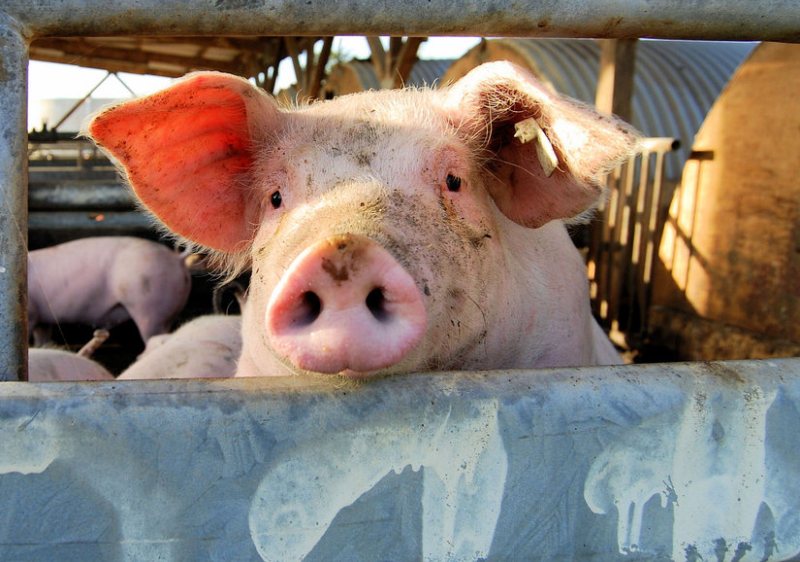
Challenging market conditions continue in the pig sector but there is reason to remain hopeful, according to new analysis by Quality Meat Scotland (QMS).
Although the pace of price declines for pig producers has eased from the autumn peak, sector data continues to highlight severe challenges for producers and processors.
However, the acquisition of Quality Pork Processers Ltd in Brechin by Browns Food Group may help alleviate some of the ongoing challenges faced by the sector.
Iain Macdonald, QMS senior economics analyst, notes that the downward pressure on the pig market continues.
"The GB standard pig price (SPP) slipped below 138p/kg in the final week of January, leaving it 1.9% below the same week of 2021 while, at just under 142p/kg, the price for carcases weighing 70-104.9kg was down by 0.5%.
"Reflecting that market conditions had also been challenging in early 2021, the SPP trailed its five-year average by nearly 7%.”
Downwards pressure on the pig market has come from an inability of the processing sector to expand output to handle an increased supply of finished pigs.
“This constraint in output has been driven by a lack of suitably skilled workers, with the change in UK immigration rules after EU exit making it harder to recruit from overseas.
"Meanwhile domestic workers tend to favour careers in other industries, such as warehousing for online retail”, said Mr Macdonald.
In June 2021, England’s agricultural census reported a 6% year-on-year increase in fattening pigs, with a 2% increase reported in Scotland.
“Yet, at GB level, slaughter declined slightly on a year earlier between June and the year-end. This resulted in a backlog of slaughter-ready pigs on farms, with weak competition for these pigs leading to lower market-clearing prices.
"In addition, delayed slaughter meant that fast-growing pigs quickly exceeded target weight-ranges, further reducing their value to the producer and processor as heavy carcases and their component cuts have fewer outlets.”
Recently published December census results for England showed a much smaller seasonal decline in fattening pigs between June and December than usual, falling 3.5% compared to a five-year average of 8%.
Mr Macdonald said: “Comparing against a more normal seasonal scenario, this suggests that slaughter numbers could have been 177,000 below potential between June and December.
"The result in England was that the year-on-year increase in slaughter pigs on farms widened to 11% in December.”
In Scotland, December census results have not yet been published but since the number of fattening pigs on Scottish farms was 8% of the English total in June 2021, this could suggest around 14,000 fewer pigs being slaughtered from Scottish farms than potential over the same period, pushing the GB backlog to 191,000.
“Moving into 2022, slaughter of standard pigs at GB price reporting abattoirs has started the year below its 2021-weekly average, suggesting little inroads have been made into the backlog,” said Mr Macdonald.
Further evidence of market distress and a severe backlog comes from an increase in carcase weights since the turn of the year, approaching 96kg.
"In the four weeks to January 29, an estimated 18.2% of the standard carcases weighed at least 105kg, up from 5.6% a year earlier, and this was already at an elevated level in early 2021 due to a backlog caused by covid-19 abattoir closures in late-2020.
“One slight positive for producers is that the rise in carcase weights has been offsetting lower per kilo prices, resulting in higher average prices per carcase.
"In the final week of January, the price per carcase was 5% higher than last year and 4% above its five-year average.
“Nevertheless, this is before factoring in the cost of production. Back in the late summer and early autumn, grain and soya futures prices had fallen back from the highs of early 2021," Mr Macdonald said.
"And Defra’s compound feed report for the July to September period had suggested that, while still 13% higher than a year before, the cost of pig feed had eased slightly on the quarter."
Since then, a deterioration in the anticipated global balance of supply and demand for grain has seen prices for wheat and barley surge by around 15% and 25% respectively.
Meanwhile, a dry summer in Argentina and Brazil has resulted in a tightening of global soyabean supply, pushing up the price of soyameal by around 15% since the autumn.
As a result, these higher raw material prices will have been passing into the price of compound feeds over the winter, likely raising them beyond the levels last reported by Defra from Q3 2021.
More positively for the pig sector in Scotland is a potential recovery in pig slaughter towards the levels seen in 2020 following a change in ownership of Brechin abattoir.
“This change in ownership also comes with wider benefit to the Scottish economy given that the pig carcases will be converted into cuts of pork and other pigmeat products at processing sites in Scotland.
"As a result, economic value will be added, and employment supported, in Scotland rather than at production sites south of the border,” concluded Mr Macdonald.
